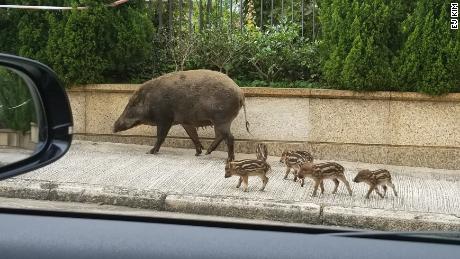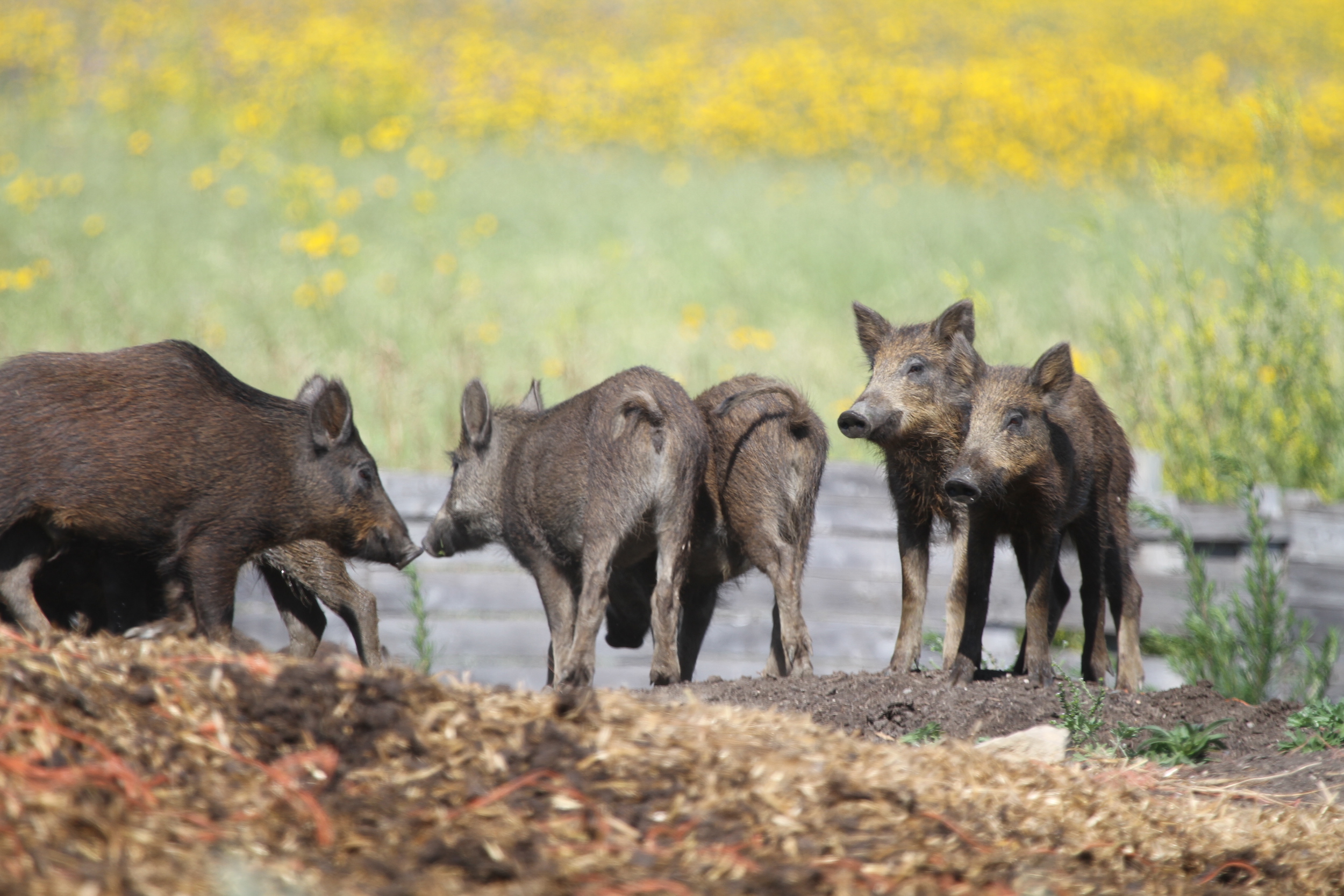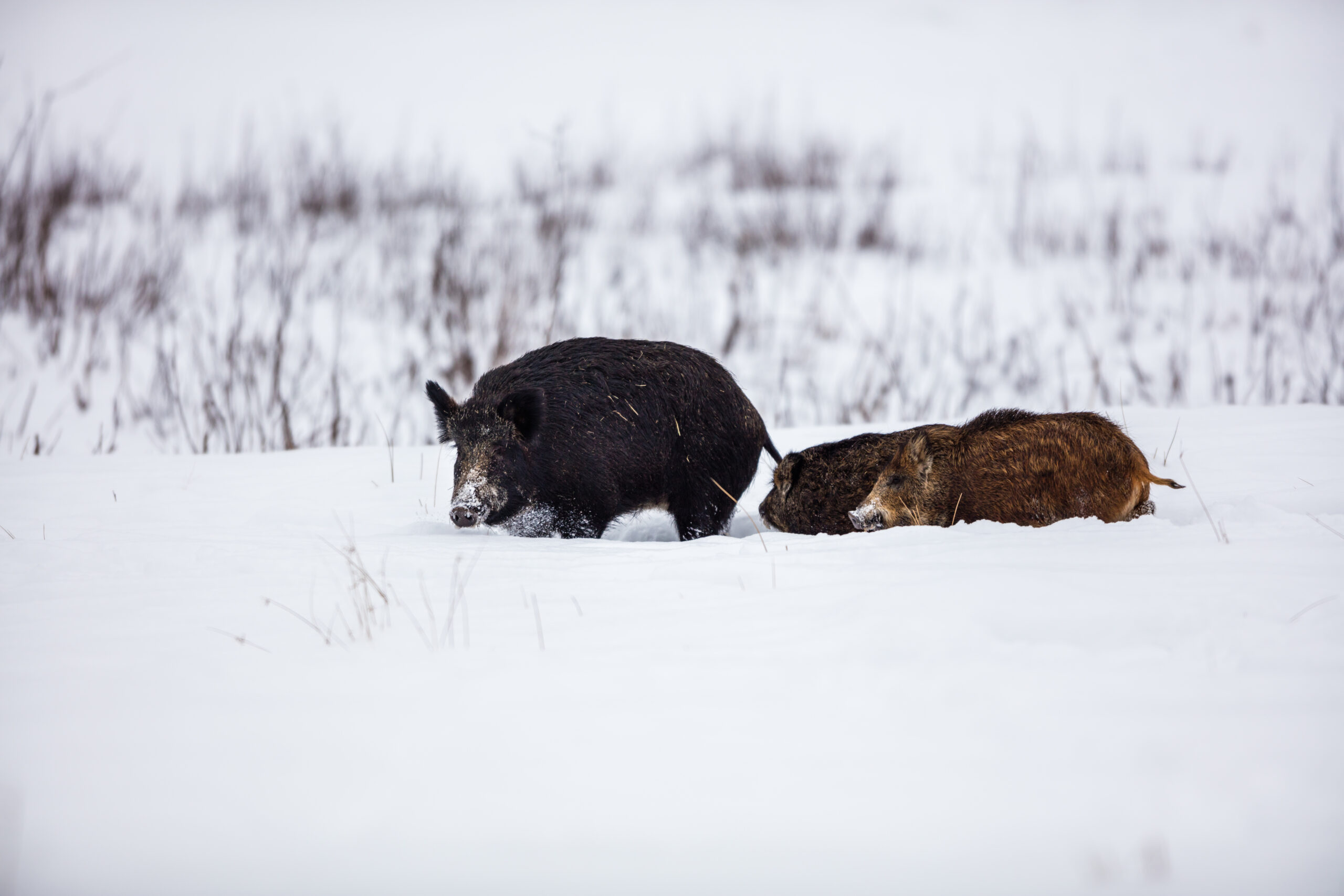Extinction Rebellion
 |
"We have already documented pig occurrences less than ten miles from the U.S. border. Quite honestly, I think there have already been some in Manitoba going into North Dakota for the last five or six years.""There is no physical biological boundary at the U.S.-Canada border. There is hardly any kind of fencing to speak of. There's a real risk of pigs moving south into the U.S.""Wild hogs feed on anything. They gobble up tons and tons of goslings and ducklings in the spring. They can take down a whitetail deer, even an adult.""Originally it was like, 'Wow, this is something we can hunt'. But it's become clear that they're threatening our whitetail deer, elk, and especially, waterfowl. Not to mention the crop damage. The downsides outweigh any benefit wild hogs may have as a huntable species."Ryan Brook, Canadian Wild Pig Research Project, University of Saskatchewan
Wild boars live in many places, from Europe to North America to the Far East. Hong Kong has a problem with wild boars becoming urbanized, just like coyotes. Humans have increasingly claimed territory that was the natural habitat of many animals. Some animals, like coyotes and wild pigs are highly intelligent and adaptable to their new situations, learning to thrive in urban areas that were once their forest habitat; think raccoons, those wily survivors who forage for food that humans waste.
And then there's the issue of people -- often people who should know better, like scientists -- deciding to encourage farmers to bring in species from elsewhere. Like kudzu brought to the southern U.S. from Japan as a ground cover whose roots would keep soil in place as an answer to soil erosion. Only to discover it is now impossible to control. Organisms sometimes arrive by ship covering the keels of ocean liners and spread to create problems where there are no natural predators and they compete successfully with native species.
 |
Think Burmese pythons in the Florida Everglades where they flourish with no natural enemies, there because exotic species owners found them too difficult to care for and dumped them in the Everglades where they thrived. Exotic Carp and eels native to Russia and China now proliferate in waters where they displace native species.
Wild pigs can migrate from Alberta, Saskatchewan and Manitoba to North Dakota, Minnesota, Idaho and Montana. However, the United States has its own struggle with wild pigs and it's possible that their giant population of pigs could easily infiltrate Canada. Millions of hogs populate areas of the United States.
"We haven't had any reports of any pigs coming across the Canadian border in the northwest part of the state", North Dakota's assistant wildlife division chief reported. These wild pigs are considered to be 'ecological train wrecks' given their rapacious appetite, destructive foraging habits and their capacity to consume just about any type of food; they are omnivorous.
Wild boars were brought into Canada from their European homes in the 1980s and '90s as potential game animals to be hunted and as well as an adjunct food source in Canada's foodstock population. They were considered viable livestock for farmers to invest in raising for a new food market. Expectations were dashed when the Canadian public turned out to be disinterested in products from wild hogs. Some of the domestic stock escaped and became feral pigs.
 | |
| Wild pigs are prolific breeders, with sows producing around six piglets per year, meaning their population grows exponentially. In Canada, the range of wild pigs has been expanding by a staggering nine per cent a year since 1990. Photo: Supplied by Ryan Brook |
Some livestock farmers simply released their stock to the wild when the market crashed, to fend for themselves. And fend for themselves they did. The present-day wild pigs are descendants of the Eurasian wild boars bred with domestic pigs to become hybrids. Their larger size and hairy bodies enabled them to withstand harsh Canadian winters in the wild.
Their intelligence as survivors also served them well in avoiding efforts to eradicate them.Weighing between 120 and 250 pounds, well insulated from the weather, capable of finding food to sustain themselves, they burrow into 'pigloos', piles of rushes and snow to weather Canadian winters.
 |
| Research shows hunting actually accelerates the spread of wild pigs, as they flee to new areas to evade hunters. Photo: iStock |
"During that time, [when wild boars were introduced to Canada from Europe from the 1980s to diversify foodstock], a lot of experts told farmers to cross their boars with domestic pigs, which are larger and reproduce more. Unfortunately, that created 'superpigs', because it super-charged their size and reproduction.""Being larger helps them survive the cold winters [in Canada], and eventually created the ultimate invasion species.'"If the boars hadn't been crossbred, they likely could still have been a problem, but this really super-charged them."Ryan Brook, biologist, University of Saskatchewan
Labels: Adaptability, Competition for Native Species, Eradication, Invasive Species. Research

0 Comments:
Post a Comment
<< Home